-
Why our Teeth Shift or Become Crooked
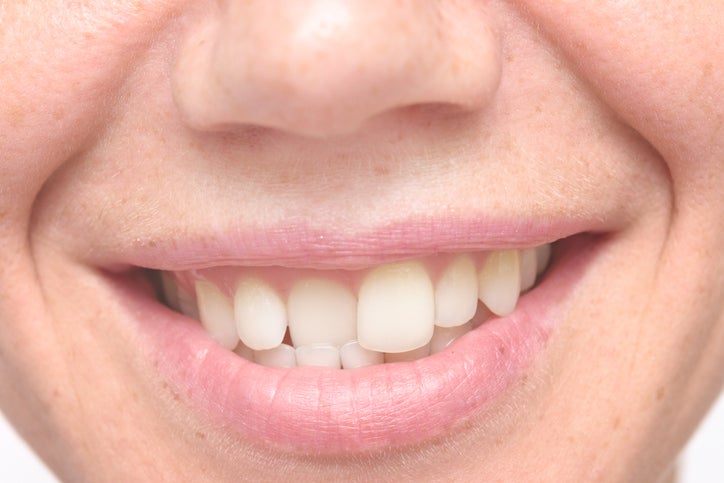
Have you noticed a shift in your bite? You might think that your teeth are firmly attached, but it’s actually very common for them to shift, becoming crooked or misaligned. What causes teeth to move around in your head? And what should you do about it?
- Sometimes baby teeth become crooked. It doesn’t necessarily mean the permanent teeth will be crooked, but in some situations it does. Baby teeth may just be crooked because they’re too small for the available gum space. If a child sucks a thumb or pacifier for too long, the baby teeth may become crooked, and if there is trauma to the mouth or tooth decay that causes a baby tooth to fall out prematurely, the permanent teeth may grow in crooked. If the baby teeth are crowded, the permanent teeth probably will be too. Genetics and heredity play a role, and poor dental habits and poor nutrition are sometimes the problem.
- Your jaw size may be to blame. Some scientists believe that our teeth often become overcrowded because our jaws have evolved to be smaller than they used to be. Interestingly, the lower jaw grows forward continually, throughout a person’s lifetime. This can cause the lower front teeth to bump into the upper front teeth, which either makes the top teeth spread out or the bottom teeth become crowded. On the other hand, the width of your lower jaw diminishes over the years, which also contributes to crowding of the lower teeth.
- Teeth can lose enamel and change shape. Whether it’s because of an injury or acid erosion, sometimes enamel is lost from your teeth, changing their shape. This can cause them to move out of alignment. Grinding the teeth, a condition called bruxism, can change the shape of the teeth as well.
- As you age, your teeth may shift. Aging causes bones, ligaments, and muscles to grow weaker. What’s more, the constant pressure of moving against each other can wear teeth down, causing them to shift and crowd.
Sometimes, there’s no reason to do anything about teeth that have shifted. Your quirky, crooked smile may just be part of who you are, and there’s nothing wrong with that. There are some factors, though, that would make it a good idea to move your teeth back where they belong. If it’s hard to chew, to speak, or to keep your teeth clean, or your crooked teeth are diminishing your confidence, there are many options available for straightening them.
At Park 56 Dental Group, we provide personalized, quality dental care in a spa-like environment. We offer pediatric, prosthodontics, endodontics, oral surgery, Invisalign®, emergency, and sedation dentistry, all at the highest level of treatment. We serve the Midtown, Central Park, Upper East Side, Park Avenue, and all surrounding Manhattan and New York areas, in a patient-centered practice with hours to fit your schedule. Schedule your complimentary consultation today by contacting us online or calling us at (212) 826-2322.
-
The Importance of Having your Cavities Filled
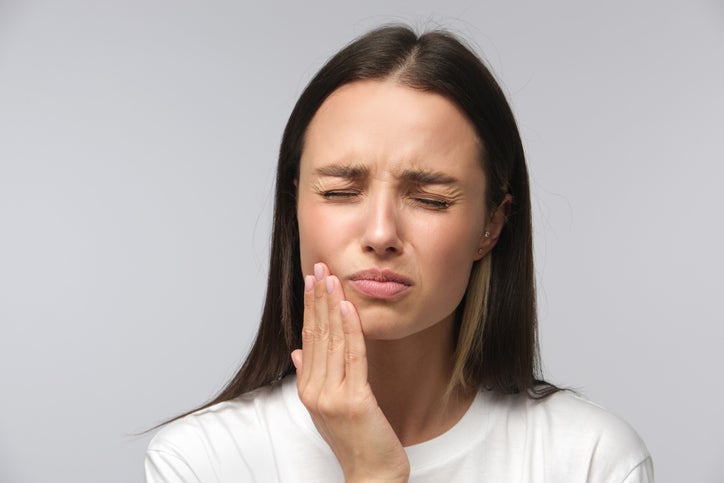
Even if you brush and floss religiously, doing your best to have pristine teeth and perfect oral health, you’re likely to one day have a cavity. If this happens, don’t delay treatment. It’s important to get any cavities filled as soon as possible, for many reasons.
- Tooth decay, left to its own devices, will spread. If you ignore a cavity, the decay will soon spread to the area around the cavity. Then you’ll not only have a bigger cavity than you originally had, but you may also have additional cavities as well. Getting it filled will solve the problem and keep the damage from spreading.
- Bacteria from a cavity is unlikely to stay in your mouth. An unhealthy tooth won’t just affect nearby teeth: it will spread bacteria as far as it can. Bacteria in your mouth is not ideal, but once it gets into your bloodstream and makes its way to other parts of the body, it can be extremely dangerous.
- Fillings keep your smile intact. If you don’t get a cavity filled in a timely manner, you may end up having to have the tooth removed entirely. Dental implants can solve the problem of missing teeth, but they’re much more expensive than fillings and require a much more complicated process. You’ll have a hole in your smile until you can get the implant, and this can compromise the bone in your jaw.
Those are pretty compelling reasons to get your cavities filled, but did you know there are different types of fillings? Each material used in fillings has its pros and cons, and your dentist will be able to help you determine which is right for you.
- Amalgam fillings have been around for over a century. They’re strong and ideal for cavities in the molars, because they can take the impact of chewing. Made of a combination of several metallic elements, they are sometimes visible when you laugh or smile, but they’re some of the least expensive cavity-filling materials.
- The other most common filling material is composite fillings. Sometimes called composite or filled resins, they’re made of a combination of glass or quartz filler. They can be made to match the color of your tooth, and they’re good in areas involved in moderate chewing.
- Metals, ceramic, and glass ionomer are also used as fillings. Gold and silver are often used, and these metallic fillings can last 10-15 years. Ceramic or porcelain fillings are attractive but expensive, and glass ionomer fillings can release fluoride to protect teeth but are less durable than other fillings.
At Park 56 Dental Group, we provide personalized, quality dental care, offering pediatric, prosthodontics, endodontics, oral surgery, Invisalign®, emergency, and sedation. We serve the Midtown, Central Park, Upper East Side, Park Avenue, and all surrounding Manhattan and New York areas, in a patient-centered practice with hours to fit your schedule. Schedule your complimentary consultation by contacting us online or calling (212) 826-2322.
-
The Relationship Between Sleep Apnea and Your Teeth

If your dentist were to ask you about your sleep, would that surprise you? In fact, dentists are often the earliest diagnosticians of sleep disorders. What is the connection between oral health and sleep disturbances?
According to the National Sleep Foundation, about 18 million Americans have sleep apnea. This condition involves pauses in breathing throughout the night, lasting from a few seconds to minutes, and sometimes occurring 30 or more times each hour. They happen because of airway obstructions caused by a too-large tongue, flaccid throat muscles, or a too-small jaw. But what does this have to do with your teeth?
Often, the first sign of sleep apnea is bruxism, or tooth grinding. When a dentist notices worn tooth surfaces, this is an indication that the patient suffers from bruxism. Grinding the teeth can cause tooth breakage, and sometimes a spike in cavities because of the damage.
Sleep apnea can be dangerous. It diminishes sleep quality because gasping for breath causes people to wake up throughout the night. What’s more, sleep apnea is linked to high blood pressure, heart disease, diabetes, and obesity. It can also contribute to periodontal disease.
You might notice some of the signs of sleep apnea yourself. These include chronic snoring, daytime drowsiness, morning headaches, or waking up with a dry mouth or sore throat. Bruxism can manifest in tired, tight jaw muscles or sensitive teeth. If any of these symptoms seem familiar, talk to your dentist about sleep apnea
If your dentist thinks you have sleep apnea, he or she may recommend a sleep study. Once a diagnosis is confirmed, there are solutions for sleep apnea. You benefit from lifestyle changes like losing weight and quitting smoking, or you might need a custom mouthguard. If your sleep apnea is moderate to severe, you might need a CPAP, or continuous positive airway pressure device. This is a mask that fits over your nose when you’re sleeping and uses air pressure to keep your airway passages open. You might also benefit from a custom Often, when the apnea is resolved, the bruxism stops entirely.
At Park 56 Dental Group, we want to deliver the most effective sleep disorder treatment in NYC. Our founding senior partner, Dr. Philip S. Abramsky, specializes in sleep disorders, and he will work to determine which treatment is right for you. Through a series of examination, he’ll diagnose the cause of your sleep disorder, in order to recommend the proper treatment. It’s all part of our commitment to offering personalized, quality dental care in a spa-like environment. We offer pediatric, prosthodontics, endodontics, oral surgery, Invisalign®, emergency, and sedation dentistry, all at the highest level of treatment. We serve the Midtown, Central Park, Upper East Side, Park Avenue, and all surrounding Manhattan and New York areas, with a patient-centered practice that has hours to fit your schedule. Schedule your complimentary consultation today by contacting us online or calling us at (212) 826-2322.
-
9 Dental Procedures that Will Help Restore Your Smile
When cavities, stains, or traumatic injuries damage your teeth, you may find yourself covering your mouth every time you smile. To help you regain your confidence, you need restorative dentistry from an experienced dentist in NYC. Take a look at nine dental procedures we offer that can restore your smile.
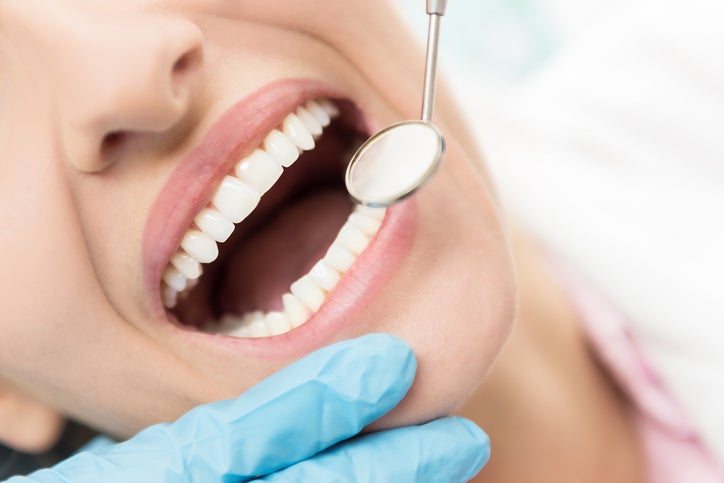
- Crowns: A dental crown is an effective way to restore a discolored or oddly shaped tooth. This solution can even protect a weak tooth from breaking or repair one that’s already broken.
- Tooth-colored fillings: Many people assume that fillings are always metallic, but new materials and techniques mean you have the option of getting more natural-looking, tooth-colored fillings. Talk to your dentist about what option is best for you. Factors such as the size of the filling, location of the tooth, price, and personal preference must all be considered.
- Veneers: This cosmetic solution covers the front side of chipped, stained, or misshapen teeth with a natural-looking porcelain veneer. The finished product looks great and functions flawlessly. Your dentist may recommend avoiding coffee, tea, wine, and tobacco to maintain your beautiful new smile.
- Bonding: Similar to veneers, bonding is a cosmetic treatment that involves attaching tooth-colored resins to your teeth to improve their shape and color. The results are strong, long-lasting, and natural-looking.
- Contouring and reshaping: Dental contouring and tooth reshaping may be all that’s required to fix elongated or roughly shaped teeth. This process involves removing a small amount of tooth enamel to alter the surface or shape of the tooth. This technique is often combined with bonding to create the most attractive smile possible.
- Implants: Dental implants consist of a titanium body, which takes the place of the missing root, and a crown, which fills the gap and replaces the function of your missing tooth. Implants can last a lifetime if properly maintained.
- Bridges: The purpose of a dental bridge is to replace one or more missing teeth. It involves installing crowns on the adjacent teeth and “bridging” the gap with an artificial tooth called a pontic. Unlike implants, no titanium root is inserted into the gums.
- Whitening: Years of drinking coffee, sipping on wine, and enjoying brightly colored berries can take a toll on your pearly whites. Luckily, you can turn back the clock with Zoom in-office whitening. Our dental professionals can brighten your smile by an average of eight shades in just one hour. Plus, the process is safe, simple, and pain-free!
- Smile makeovers: If several different problems exist in your mouth, you can combine two or more of the above dental procedures for a complete smile makeover. Your self-esteem will soar like never before once you feel confident enough to smile naturally around your friends, family, and new acquaintances.
Need help deciding which dental procedure is right for you? Ready to get the process started? Contact Park 56 Dental at (212) 826-2322 to ask questions or request a consultation at our New York dentist office.
-
What Foods Stain Your Teeth, and What Foods Help Clean Them?
Are you frustrated that your teeth appear dull and yellow, despite brushing and flossing every day? The fact is that even the best oral care can’t always prevent staining. Learn which foods cause tooth stains and which foods help ward off discoloration.
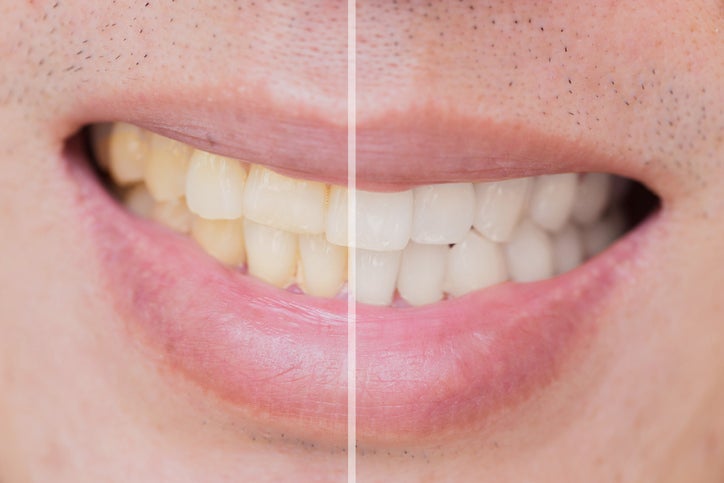
6 Foods that Stain Teeth
- Curry and tomato sauce: With their bright colors and high acidity, these sauces create the perfect conditions for staining teeth. Over time, they may turn your pearly whites yellow, so it’s best to limit your intake of curry and tomato sauce.
- Balsamic vinegar: It may taste delicious on salads, but balsamic vinegar is known for staining teeth. Its dark color and reputation for sticking to your teeth mean it can leave stains behind if not washed away quickly.
- Berries: Raspberries, blackberries, blueberries, and cranberries are all brightly colored and quite acidic, a bad combination for your teeth. However, they’re packed with beneficial antioxidants, so don’t cut them out of your diet just yet. Instead, drink milk or rinse your mouth with water after eating berries to wash the staining juices away.
- Citrus fruits: Oranges, grapefruits, lemons, and limes contain citric acid, which weakens enamel and exposes the dentin underneath. If you eat other staining foods at the same time, you could end up with discolored teeth.
- Candy: Sweets that change the color of your tongue can also stain your teeth. The sugar in candy also leads to tooth decay.
- Dark-colored or acidic drinks: Coffee, tea, wine, soda, and sports drinks are darkly colored, acidic, or both. Of these culprits, tea—green tea in particular—is the healthiest option.
4 Foods that Clean Teeth
- Fruits: Apples are perhaps the best fruit for your teeth because of their texture. Chewing an apple scrubs your teeth and stimulates your gums. The nutrients in other fruits, including pears and strawberries, also promote stronger, healthier teeth.
- Raw vegetables: As with apples, the texture of raw celery, carrots, and cauliflower have a tooth-scrubbing effect when you chew them. Other veggies known to support good oral health include cucumbers, spinach, kale, and broccoli.
- Baking soda: While eating food with baking soda in it won’t change your smile, choosing toothpaste with this mild abrasive certainly will. You can even brush with baking soda straight from the box on occasion for gentle at-home teeth whitening.
- Dairy products: Yogurt, milk, and cheese contain calcium and proteins required for healthy teeth. They also balance the pH in your mouth, so consume dairy products after eating acidic food to counteract the negative effects.
By avoiding foods that stain your teeth and reaching for foods that clean them instead, you can help keep discoloration at bay. Of course, professional dental cleanings are also critical for maintaining a bright, white smile. Remember to brush and floss daily as well to promote healthy teeth and gums.
Park 56 Dental can help your smile look its best. Schedule your next teeth cleaning in NYC by calling (212) 826-2322 today.
-
Foods to Eat for Stronger Teeth and Better Oral Health
When you consider ways to maintain a healthy smile, you might think of brushing and flossing, avoiding sweets, and visiting the dentist regularly. Did you know there are certain foods that also promote stronger teeth and better oral health? Include the following in your diet to help you smile with confidence.

Cheese
Milk tends to get all the credit for promoting strong teeth and bones, but cheese also contains the protein and calcium found in milk. Your body needs these nutrients to maintain healthy tooth enamel. Cheese has also been shown to raise the pH level in your mouth, making your saliva less acidic and lowering the risk of tooth decay as a result.
Plain Yogurt
As with cheese and other dairy products, yogurt is high in tooth-strengthening protein and calcium. Yogurt offers the added benefit of probiotics, which take the place of harmful bacteria in your mouth to help prevent cavities. To maximize the positive effects, choose plain yogurt with no added sugar.
Leafy Greens
Kale, spinach, and other leafy greens are packed with vitamins and minerals, including calcium. These super foods also contain folic acid, a type of B vitamin that has been shown to treat gum disease in pregnant women.
Apples
Apples might be sweet, but unlike candy, they’re also high in fiber. Plus, the act of eating an apple increases saliva production, which rinses away bacteria. Even the crisp texture of this fruit helps to scrub your teeth and stimulate your gums as you chew.
Carrots & Celery
Raw carrots and celery sticks offer many of the same benefits as apples. They’re crunchy, full of fiber, and encourage saliva production, making them an ideal food with which to end a meal. Plus, they provide the body with vitamin A. This nutrient helps prevent dry mouth, a condition that increases the risk of gingivitis, tooth decay, and oral infections. Vitamin A also promotes a faster healing time for mouth sores.
Almonds
In addition to being a good source of calcium and protein, almonds are also low in sugar, which is good news for oral health. They’re crunchy, which means they won’t gum up your teeth, and they provide a power-packed energy boost.
Green & Black Tea
Compounds found in tea called polyphenols slow the growth of the harmful bacteria associated with gum disease and cavities. If you use tap water to brew your tea, you might also get a healthy dose of fluoride. Just remember to rinse your mouth out with water after drinking tea because it can cause cosmetic staining.
In addition to increasing your intake of foods for a healthier mouth, remember to avoid certain foods as well. Avoid plaque buildup, tooth decay, and gum disease by steering clear of candy, soda, acidic fruit juice, sticky foods, and refined carbohydrates.
Maximize your efforts to maintain good oral health by visiting Park 56 Dental. We offer personalized care at our spa-like, patient-centered New York dentist office. Contact us today at (212) 826-2322 to schedule an appointment.
-
Dental Veneers FAQs
Are you self-conscious about a chipped tooth or that gap in your smile? Stop hiding your mouth behind your hands, and restore your confidence with dental veneers! Here are the most frequently asked questions we hear about this type of cosmetic dentistry.
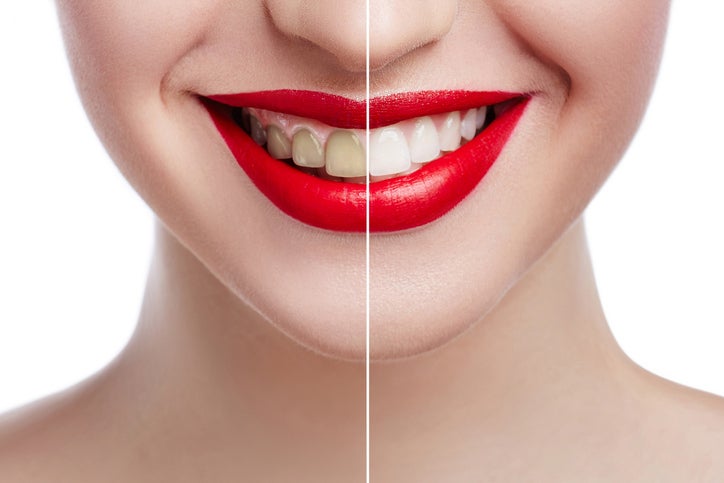
What are dental veneers?
Veneers are thin, strong pieces of tooth-colored porcelain that resemble an artificial fingernail. They are custom-made to fit your teeth using an impression or digital scan of your mouth. Veneers are bonded to the front of your teeth to improve their color, shape, size, and function.
How much do veneers cost?
The cost range depends on the dentist’s experience, the quality of the material used in making your veneers, and how many veneers you receive. Sometimes, insurance will cover the cost of one or two veneers when a fracture or decay is present.
How long do veneers last?
Thanks to the durability of porcelain and the strength of the bonding agent used to attach each veneer, you can expect the results to last decades. As long as the work is done right, the only time a patient should have problems with a veneer is after a traumatic event. Porcelain can crack, just like real teeth, but it takes a hard hit to the face or biting down on a bone to make it happen.
Are there any dietary restrictions?
It’s always wise to treat your teeth gently, whether you have veneers or not. This means avoiding using your teeth as tools and biting tough foods (like taffy, beef jerky, or French bread) with caution. Also, while veneers are stain-resistant, your dentist may recommend avoiding coffee, tea, red wine, and tobacco to help your beautiful new smile last.
What happens to the tooth under a veneer?
To ensure a natural appearance, about 0.5mm of your existing tooth must be shaved down in preparation for placing the veneer. There’s no need to damage the tooth structure aggressively to achieve authentic-looking results.
Will my teeth be immune to cavities?
Veneers can’t decay, but the natural tooth underneath can still get cavities. The most vulnerable spot is the junction between the veneer and your natural tooth. Sealing this area while placing the veneer closes it off to help prevent decay. Continue to brush and floss as usual to keep your teeth and gums healthy.
How many veneers should I get?
Eight is the most common number of veneers patients receive. With veneers on the four upper and lower teeth, a bright, white shade can be selected to make your smile look its best. If you get fewer veneers than this, the color must match your existing teeth to avoid standing out.
At Park 56 Dental, we help our patients look their best with dental veneers and other cosmetic dentistry. If you’re interested in learning more, please contact us at (212) 826-2322 to schedule a complimentary consultation. We serve Midtown, Central Park, Upper East Side, Park Avenue, and the surrounding Manhattan and NYC areas.
-
The Stages of Invisalign Treatment
Do you want straighter teeth without having a mouth full of brackets and wires? Invisalign could be right for you! This innovative technology gives you the smile you have always wanted in a discreet, comfortable way. Three simple steps are all that’s standing between you and the smile of your dreams.
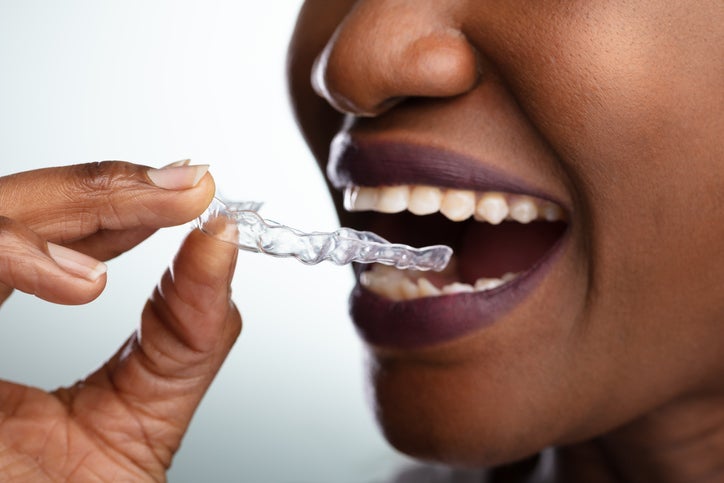
Step 1: Plan Your Invisalign Treatment
Whether you have mildly crooked teeth or a severe bite problem, Invisalign may be an option for you. The first step is to visit a dentist for digital x-rays and a scan of your mouth. Powerful technology and your dentist’s expertise combine to create a digital roadmap of your path to a straighter smile.
Once your plans are finalized, you can sit down with your dentist and view your virtual treatment plan. You’ll see exactly what your bite looks like now and how it will gradually shift, with each successive aligner, until your smile is flawless. Most patients agree to a treatment plan lasting nine to 15 months.
Step 2: Wear Your Aligners
Invisalign aligners are made using an advanced printing process that ensures a comfortable, streamlined fit. Once they’re ready, you’ll need to schedule a time to pick them up at the dentist’s office. You’ll try them on, have any questions answered, and receive specific instructions for wearing your aligners.
Rest assured that Invisalign fits your life—it doesn’t interrupt it. You can keep eating all your favorite foods, play the sports you love, and brush and floss without pesky brackets and wires getting in the way. The removable aligners are easy to clean, and with proper care, they don’t increase your risk of tooth decay.
Most patients wear each pair of aligners for two weeks before moving onto the next set. For your Invisalign treatment to stay on track, you must wear your aligners for at least 22 hours a day. This leaves time to remove them for eating, but you should wear them at all other times.
To make sure your teeth are progressing the way they should, you should schedule periodic checkups with your dentist. This is also when you receive your next batch of aligners.
Step 3: Wear a Retainer
While your aligners are a crucial step for straightening your smile, a retainer is what makes the results last a lifetime. Vivera retainers are made with the same advanced technology as Invisalign, meaning they are custom to your mouth and less likely to crack than other clear retainers. You may only need to wear your Vivera retainers at night, so you can continue smiling with complete confidence during the day.
Park 56 Dental is a certified Invisalign provider in NYC. We can help you plan your smile transformation in our spa-like office, where you’ll receive patient-centered care during hours that fit your schedule. To learn more about Invisalign, please contact us online or call (212) 826-2322 and schedule a complimentary consultation. We serve Midtown, Central Park, Upper East Side, Park Avenue, and the surrounding Manhattan and NYC areas.
-
Can Probiotics Help Your Oral Health?
Probiotics are best known for promoting a healthy digestive system. However, that’s not all they can do. Here are some lesser-known facts about probiotics and how they can help your oral health.
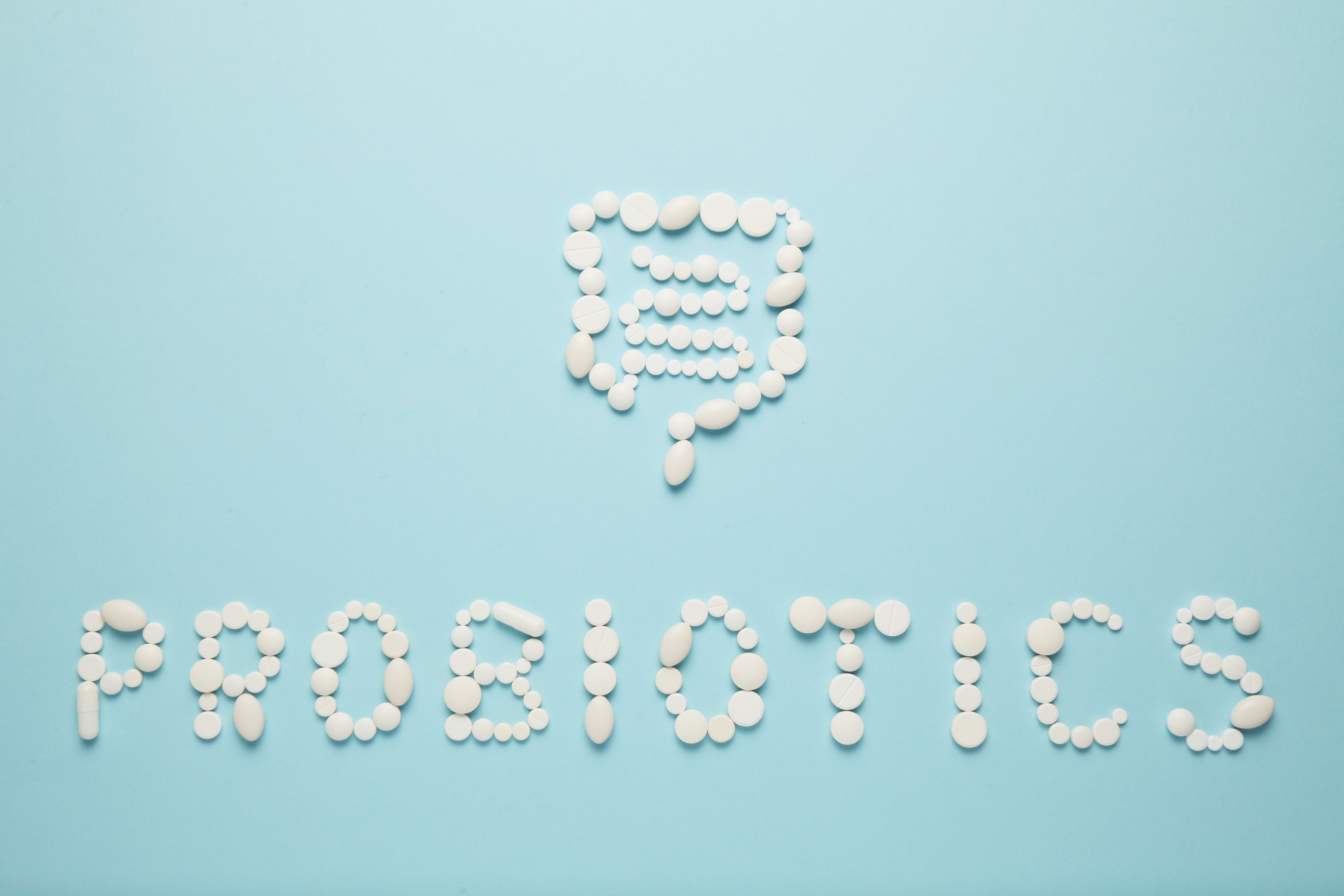
What are Probiotics?
Probiotics are live bacteria and yeast that are beneficial to humans. They are found in certain foods and can also be taken as supplements. Examples of probiotics include:
- Lactobacillus, which helps with diarrhea and makes lactose easier to digest
- Bifidobacterium, which helps with irritable bowel syndrome (IBS) and other inflammatory digestive conditions
- Saccharomyces boulardii, which helps combat digestive issues that cause diarrhea
How Probiotics Work
Bacteria are generally considered harmful. However, your body is full of bacteria, both good and bad. If you have digestive issues caused by too many bad bacteria, probiotics can help balance things out. Likewise, when you lose beneficial bacteria, such as from taking antibiotics, probiotics can help replace them.
Health Benefits of Probiotics
The main reason people take probiotics is to promote a healthier gut, but good bacteria can improve your health in many other ways as well. Research shows that probiotics help treat:
- Skin conditions, including eczema
- Mental health
- High cholesterol and hypertension
- Allergies and colds
- Bad breath, gum inflammation, and oral cancer
Products that Contain Probiotics
In general, foods that have been fermented or enriched in some way contain probiotics. These include:
- Yogurt
- Milk
- Soft cheese
- Miso (fermented soybeans)
- Sauerkraut
- Sourdough bread
Probiotic supplements are also available in the form of tablets, capsules, and powders. Some oral health products, including mouthwash and toothpaste, also contain probiotics.
Precautions & Side Effects
It’s safe for most people to take probiotics because these good bacteria and yeasts are already in your body. A majority of the time, probiotics improve health with little to no adverse reactions. However, some side effects are possible:
- An upset stomach may occur within the first few days of taking probiotics.
- People who are allergic to probiotics may have a more severe digestive response.
If you have a weakened or compromised immune system, you should not take probiotics because they could trigger an infection. Don’t take probiotics while you are seriously ill or recovering from surgery.
Using Probiotics to Help Your Oral Health
It’s wise to consult with a dentist before taking probiotics for oral health. The types of products available include probiotic toothpaste, which rids your mouth of bad bacteria while leaving good bacteria intact, and probiotic mouthwash, which helps prevent plaque buildup. Just remember, probiotics are not meant to replace other good oral health habits, including brushing, flossing, eating a healthy diet, and having your teeth professionally cleaned twice a year.
Looking for a qualified dentist in New York? Park 56 Dental can meet your needs in our spa-like office. We serve Midtown, Central Park, Upper East Side, Park Avenue, and the surrounding Manhattan and NYC areas. Contact us at (212) 826-2322 to schedule your complimentary consultation today.
-
How Often to Replace Your Toothbrush
You might brush your teeth twice a day, but how closely do you look at the bristles before sticking them in your mouth? Get the most out of your oral care routine by taking care of your toothbrush and replacing it as needed.
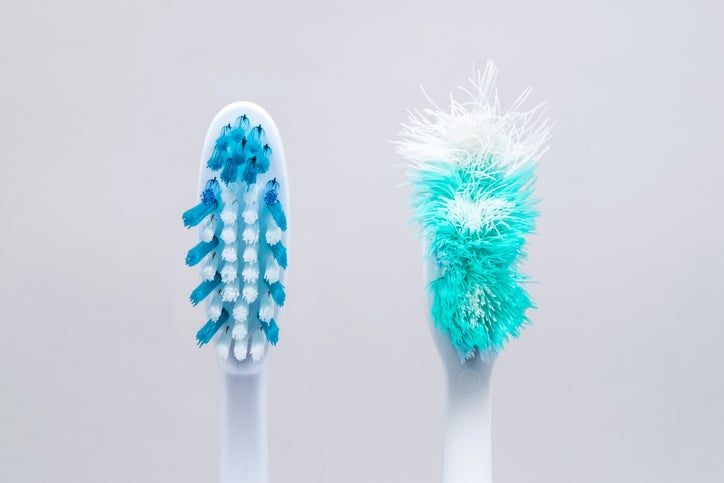
When to Replace Your Toothbrush
The American Dental Association (ADA) recommends changing your toothbrush every three months. This is about how long it takes for the bristles to become frayed. When this happens, your toothbrush loses the ability to scrub your teeth and remove plaque effectively, making you more vulnerable to cavities and gum disease.
It’s also possible for germs to build up within the bristles. That’s why you should also replace your toothbrush after being sick. Continuing to use the same one could make you sick again. For this reason, it’s wise to have a backup toothbrush or two in your medicine cabinet.
Take Care of Your Toothbrush
You must clean and store your toothbrush properly to keep fungus and bacteria at bay. Start by rinsing it thoroughly after each use to remove all traces of saliva and toothpaste.
Then, store the toothbrush upright and uncovered so it dries quickly. Choose a location as far away from the toilet as possible to prevent fecal matter from settling on the bristles. Don’t share your toothbrush with anyone, and keep each family member’s toothbrush separate from one another so the bristles don’t touch and spread germs.
Only cover your toothbrush while traveling to prevent it from touching unsavory surfaces. Even then, only pack your toothbrush in a travel case when it’s completely dry.
If you’re concerned about germs, you can use a toothbrush sanitizer. This kills bacteria using steam and dry heat or UV light. While these methods aren’t enough to sterilize your toothbrush, they remove enough oral bacteria to sanitize or disinfect the bristles.
How to Shop for a New Toothbrush
If you realize it’s been more than three months since you replaced your toothbrush, it’s time to go shopping. The most important qualities to look for in a new toothbrush are soft bristles and a small head to get in hard-to-reach places. Other characteristics—including the handle type, head shape, and bristle features—come down to personal preference.
You might also consider investing in an electric toothbrush. The incredibly fast-moving bristles are shown to remove 21 percent more plaque and reduce the risk of gingivitis by 11 percent. Powered toothbrushes are easier for children and people with arthritis to operate. They also have removable heads, which you should replace every three months like an ordinary toothbrush.
If you’re unsure about how to care for your toothbrush or what products you should include in your oral care routine, ask your dentist for recommendations. Your professional cleaning twice a year is a great time to find out more about maintaining a beautiful smile. To schedule a complimentary consultation at Park 56 Dental, please contact our NYC dentist office at (212) 826-2322 today.
RECENT POSTS
categories
- Uncategorized
- Cosmetic Dentistry
- Veneers
- Healthier Teeth
- Teeth Whitening
- Dental Health
- Video
- Dental Emergencies
- Invisalign
- Dental Implants
- Root Canal
- Sedation Dentistry
- Infographic
- Dental Crowns and Bridges
- Dental Anxiety
- Gum Disease
- COVID-19
- Bad Breath
- New York Dentist
- Cut out sugar
- General Dentistry
- Oral Health
- Oral Cancer
- Dry Mouth
- Gum Health
- Toothache
- Dental Sealants
- Cavities



